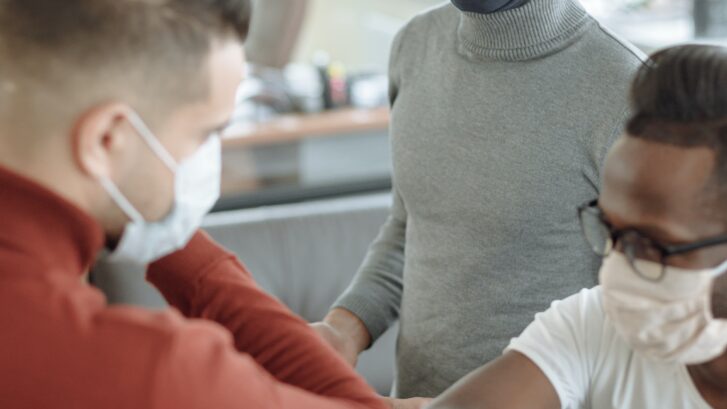How to Celebrate the Holidays Safely
As we head into the holidays, our concierge doctors are concerned that pandemic fatigue might tempt people to throw caution to the winds and just celebrate, starting with Thanksgiving.
The fact is, we’re all fed up with the “new normal.” People want more than anything to return to the way our lives were before this scourge attacked the world early this year. Pandemic fatigue is not only real, it’s totally understandable.
“In the spring, it was fear and a sense of, ‘We’re all in it together,’” Vaile Wright, a psychologist at the American Psychological Association (APA) told The New York Times. “Things are different now,” she said. “Fear has really been replaced with fatigue.”
This led to a sense of complacency and carelessness. While understandable, this caused a wave of increased cases and deaths in the U.S. and around the world.
“Citizens have made huge sacrifices,” Dr. Hans Kluge, the World Health Organization’s (W.H.O.’s) regional director for Europe, told the Times. “It has come at an extraordinary cost, which has exhausted all of us, regardless of where we live, or what we do.”
The high cost of carelessness
A recent report in The Washington Post serves as a cautionary tale for our country. Canada celebrates their own Thanksgiving on the second Monday of October. Despite warnings from public health officials there to limit celebrations to members of the immediate household, apparently that advice went unheeded by many Canadians.
In the weeks after, Canada saw rising case numbers as a result. Ontario, for example, reported a record-high number of daily cases within two weeks of the holiday. A single gathering of 12 extended family members in Toronto resulted in a cluster of coronavirus cases.
“People did not mean to spread COVID-19,” Deena Hinshaw, Alberta’s chief medical officer of health, told The Post. “But it is a reminder that social gatherings where social distancing and masking are not used consistently are a significant risk for spread.”
We can understand the longing to get together for the traditional holidays, beginning with with Thanksgiving. But that is, unfortunately, a recipe for disaster.
“We are set up for just a perfect storm—a conflagration,” Megan Ranney, an emergency medicine professor at Brown University, told The Post recently. “Right now, you can talk about there being lots of little burning fires across the country. And then Thanksgiving will be the wind that will whip this fire up into an absolute human disaster for our country.”
This country’s leading infectious disease expert, Dr. Anthony Fauci, likewise warned that Thanksgiving celebrations could lead to even more cases.
“That is, unfortunately, a risk, when you have people coming from out of town, gathering together in an indoor setting,” he told CBS News recently. “It is unfortunate, because that’s such a sacred part of American tradition.”
Yes it is. But we’d like to suggest some ways to minimize that risk and safely celebrate the holidays.
A few COVID-19 reminders
First, let’s review a few facts.
The SARS-CoV-2 coronavirus is one of the most contagious viruses known to man. It spreads readily through the air and by surface contact, from those who have symptoms as well as those who don’t.
Because of this, areas with high air circulation, such as the outdoors on a windy day, tend to be safer than crowded indoor spaces with poor ventilation.
Far deadlier than the flu, the coronavirus travels through the bloodstream to every part of the body. This is why it’s so difficult to treat, and why many of its victims appear to suffer months-long aftereffects.
How to safely celebrate the holidays
With that in mind, if you’re preparing to celebrate the holidays, here are a few tips.
The Centers for Disease Control and Prevention (CDC) recommends limiting gatherings to those in your immediate household. If you’re going to host a Thanksgiving dinner, the CDC suggests holding it outdoors. It also says to only invite family and friends from your immediate neighborhood.
“Gatherings with more preventive measures, such as mask wearing, social distancing, and hand washing . . . pose less risk than gatherings where fewer or no preventive measures are being implemented,” the CDC says.
Other ways to judge risk, according to the CDC:
- Indoors is riskier than outdoors.
- Poor ventilation is riskier than good ventilation (e.g., places with open windows and doors).
- Longer gatherings are riskier than shorter gatherings.
- More attendees pose a greater risk than fewer attendees.
- Local attendees pose less of a risk than those traveling from other areas who may have been exposed at home or during their travels but aren’t yet showing symptoms.
If you can’t control the environment, the attendees, or their behavior, you need to ask yourself whether one holiday is worth the risk.
“Staying home is the best way to protect yourself and others,” the CDC says.
As we noted above, we’re all tired of the precautions necessary to reduce the spread of the novel coronavirus. But parents, for instance, remain on high alert to ensure the safety of their children for eighteen-plus years. If you think of it in these terms, a year or two of vigilance might seem more acceptable.
Remember, the fastest way for this thing to be “over” is to deny it new hosts. This includes the bodies of you and your loved ones. Please follow these tips in order to safely celebrate the holidays.

